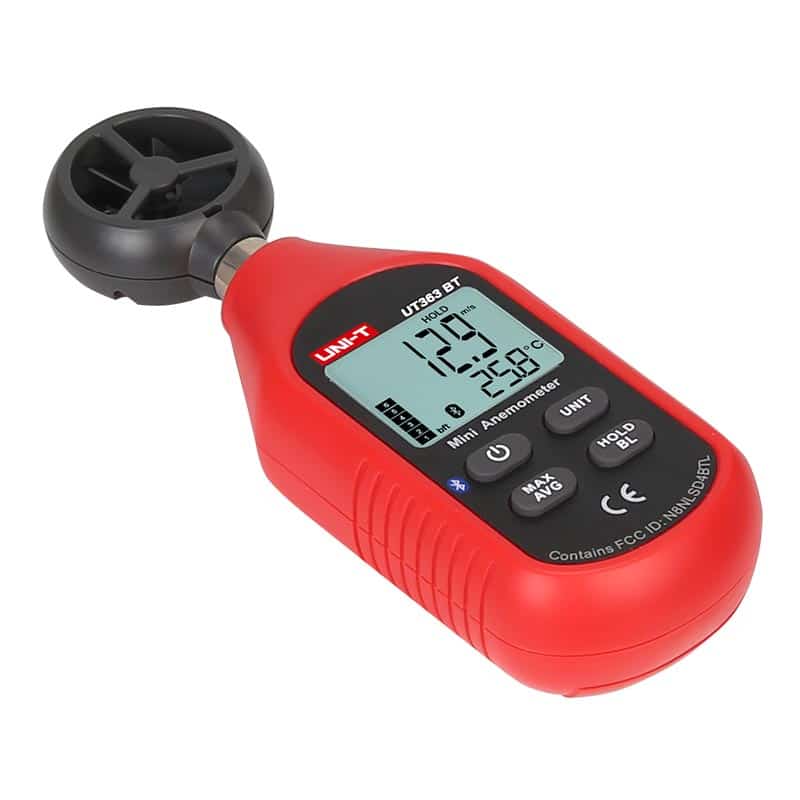Contrasting Digital and Mechanical Anemometers: Which is Right for You?
Contrasting Digital and Mechanical Anemometers: Which is Right for You?
Blog Article
Anemometers Unveiled: Understanding Their Value in Environmental Surveillance and Precaution
The duty of anemometers in ecological tracking and precaution is usually undervalued, yet their relevance is undeniable. These instruments have a long history rooted in clinical query and technical improvements, advancing to come to be necessary tools in various fields. From weather forecasting to air travel safety, anemometers play a critical duty in offering accurate information that educates decision-making procedures and improves general security. Understanding the ins and outs of anemometers introduces a world of crucial understandings that are essential to our understanding of the atmosphere and the actions we take to make certain safety.
Background of Anemometers
The evolution of anemometers can be traced back to the old people where simple wind determining devices were initial utilized. One of the earliest known anemometers was the hemispherical mug anemometer designed by Leon Battista Alberti in the 15th century.
Over the years, innovations in innovation led to the advancement of even more contemporary anemometers, including ultrasonic anemometers and laser Doppler anemometers, providing boosted precision and performance in determining wind rate and direction. The background of anemometers showcases a remarkable journey of advancement and progress in the area of weather forecasting.
Kinds Of Anemometers
Throughout the area of meteorology, various kinds of anemometers have been developed to accurately gauge wind speed and instructions. Sonic anemometers make use of ultrasonic signals to determine wind rate and instructions accurately. Hot-wire anemometers run based on the principle that the cooling result of wind on a heated cable is proportional to the wind speed.
Applications in Weather Forecasting
Having gone over the numerous sorts of anemometers made use of in weather forecasting for determining wind rate and instructions, it is necessary to discover their sensible applications in the area. Anemometers play a critical function in meteorology by supplying real-time and accurate data on wind problems (anemometer). Meteorologists use anemometers to keep track of wind rate and direction to anticipate climate patterns, problem cautions for serious weather occasions like storms, tornadoes, and storms, and analyze weather for aeronautics safety and security
In meteorology, anemometers aid in understanding local and neighborhood wind patterns, which are important for predicting climate adjustments and figuring out climatic trends. These devices are also utilized in research to examine microclimates, metropolitan warmth islands, and air pollution dispersion. Additionally, anemometers are used in farming to enhance crop management techniques, such as irrigation and pesticide application, based upon wind conditions.
Relevance in Aeronautics Security
An essential aspect of ensuring air travel security hinges on the careful tracking of wind problems using anemometers. Anemometers play a crucial duty in air travel by offering real-time information on wind speed and direction, assisting pilots in making informed choices throughout trip, liftoff, and touchdown. Uncertain and solid winds can significantly affect airplane procedures, making it crucial for aviation authorities to rely on precise wind measurements to make sure the safety and Bonuses security of guests and team.

In the dynamic setting of aeronautics, where also minor changes in wind rate and instructions can have profound impacts, anemometers stand as vital tools for promoting safe and secure air traveling.
Function in Environmental Study
Just how do anemometers add to innovations in ecological research study? Anemometers play an essential duty in ecological research study by supplying crucial data on wind speed and direction. This info is vital for comprehending numerous climatic procedures, such as air pollution dispersion, climate patterns, and climate modification. By accurately measuring wind qualities, anemometers assist researchers examine the activity of toxins more helpful hints airborne, assess the effect of commercial discharges, and forecast the spread of impurities in the setting.


Verdict
In verdict, anemometers have actually played a crucial role in environmental tracking and security steps. Comprehending the importance of anemometers is vital for accurately gauging wind speed and direction, next which is essential for anticipating weather patterns, making sure secure aviation procedures, and carrying out ecological research studies.
One of the earliest recognized anemometers was the hemispherical mug anemometer invented by Leon Battista Alberti in the 15th century. Over the years, advancements in modern technology led to the growth of even more contemporary anemometers, consisting of ultrasonic anemometers and laser Doppler anemometers, providing increased accuracy and performance in measuring wind speed and direction. Hot-wire anemometers run based on the principle that the cooling result of wind on a heated cord is proportional to the wind rate. Meteorologists use anemometers to monitor wind speed and direction to anticipate weather condition patterns, problem cautions for serious weather condition occasions like hurricanes, tornadoes, and storms, and assess climatic problems for aeronautics security.
Understanding the significance of anemometers is crucial for accurately gauging wind speed and instructions, which is vital for predicting weather patterns, ensuring secure aeronautics operations, and performing environmental studies. (anemometer)
Report this page